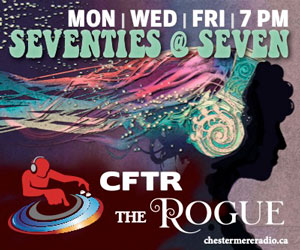The holiday season is now upon us, which brings many social events, complete with far too much eating of sweets, and countless celebratory glasses of wine.
As an avowed and unrepentant wine snob, I keep my preferred tipples on the dry side, looking down my nose at the sweet wines of the world, considering them unworthy of the suave and sophisticated palate that I have carefully curated over the years.
But come the holiday season, I throw all that nonsensical snobbery out the window, as sweet wines pair delightfully with Christmas cookies, Hanukkah hamantaschen, and Yuletide yummies.
A general rule for wine pairing is that the flavour intensity of the food should match the flavour intensity of the wine. Because so many holiday treats are laden with sugar, they pair better with a sweeter wine, as the drier wines tend to taste more astringent when paired with sweet foods.
While many grape varietals can be used to produce a sweet wine by stopping the fermentation process before the yeast has consumed all the sugar, the Muscat grape is perhaps the varietal used almost exclusively for sweeter wines.
While the origins of the Muscat grape have been lost in the murky and wine-stained depths of time, most wine scholars agree that the grape originated in the middle east, possibly in the areas now known as Egypt or Oman.
The grape itself has been crossbred with many varietals, and there are now more than 200 unique strains within the Muscat family.
Depending on the country of production, the grape is referred to as Muscat, Moscato, Muscatello, Muskateller, Muskotály, and assorted other regional variations. The most popular name is Moscato, made popular by the famed Moscato d’Asti wine from Italy.
Regardless of the location, and with little regard for the local terroir, the most distinctive characteristic of the Muscat grape varietal is its highly aromatic bouquet.
Italian winemakers will usually produce their Moscato in the frizzante style, also known as semi-sparkling. These wines undergo a minor secondary fermentation in the bottle, producing a small amount of tiny bubbles in the glass. Frizzante wines are not nearly as bubbly as Champagne, and the refreshing tingle is welcome tickle on the tongue while nibbling a sugar cookie or other holiday sweet.
As for the taste, Moscato wines are extremely fruit-forward, and are meant to be consumed fresh and young, rarely spending any time in an oak barrel before bottling.
The flavours run towards pear and apple, with ripe peach and apricot on the finish. With its complementary floral aromas, this is a fresh and vibrant wine that cries out for pairing with or apple pies, sugar cookies, or other sweets.
While Italy is the reigning champion of Moscato, other countries have their own spin on the style. The Spanish style is called Moscatel, and is frequently made from a unique orange-hued varietal in the extended Muscat family, producing a non-fizzy, noticeably sweeter dessert wine than the Italian Moscato.
The hotter temperatures in southern Spain contribute to the fuller ripeness, and the unique varietal grown in Spain has an interesting oily texture that coats the tongue, making well-suited as a dessert wine.
Despite our short growing season, we even have a small domestic Muscat industry here in Canada, both in the Okanagan Valley of BC, and the Niagara Peninsula in Onterrible.
My favourite Canadian spin on the Muscat grape is the Moscato d’Osoyoos, inspired by the famed Moscato d’Asti from Italy, quite possibly the best-selling example of the varietal.
Grown in the southern tip of the Okanagan Valley, the climate there is almost desertlike, with dry and cracked soils, and even a few tumbleweeds rolling by in the gentle breeze. This is the hottest part of the Okanagan Valley, and much prized by Canadian winemakers.
I brought home a few bottles on my most recent pilgrimage to the Okanagan Valley, and since these wines are best enjoyed young, have already consumed almost all of them. The slight effervescence is audible when popping the cork, and the delicate dance on the tongue helps waft the aromatics into the nose.
Notes of orange blossom and pear dominate the palate, with hints of melon and rose petals on the long finish. At only 10% ABV, I did not even feel guilty about going back for seconds, and even thirds! Try one for yourself at your next holiday gathering!






